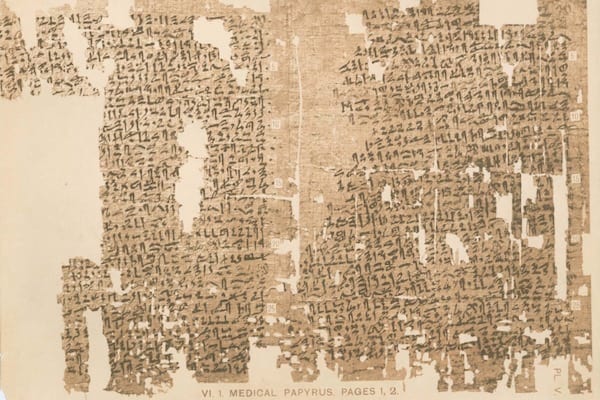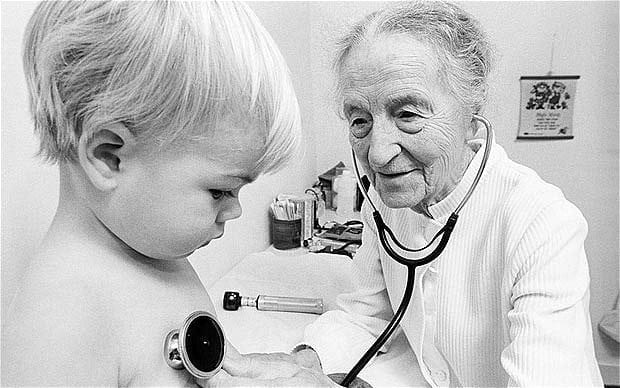Funtabulously Frivolous Friday Five 100
Just when you thought your brain could unwind on a Friday, you realise that it would rather be challenged with some good old fashioned medical trivia FFFF, introducing the Funtabulously Frivolous Friday Five 100 – Getting Old
Question 1
What is the world’s oldest surviving medical text?
Reveal the funtabulous answer
The Kahun Gynaecological Papyrus.
The Kahun Papyri were discovered near El-Lahun, Egypt in 1889 By Flinders Petrie (grandson of Captain Matthew Flinders, who first surveyed the Australian Coastline).
Kahun was an ancient settlement close to the Pyramid of Sensuret II. It was abandoned about 1700 BC.
Petrie unearthed about a thousand fragments of papyrus relating to medical, legal and veterinary matters, dating from 1825 BC. The medical texts attribute most ailments to problems of the uterus, and prescribe a variety of vulval poultices and fumigants.
“Treatment for a woman whose eyes ache, who sees not, and has pain in the neck: Thou shalt say as to it, it is discharges of the uterus in her eyes.
Thou shalt fumigate her on fresh incense and fresh fat: fumigate her eyes with the shanks of the legs of bee-eaters; thou shalt make her eat the liver of an ass, raw.”
Hieratic Papyri from Karun and Garob, F Ll Griffith 1898
Question 2
What is the world’s oldest surgical procedure?
Reveal the funtabulous answer
Trephination – now known as burrhole craniotomy.
The earliest known example is from a Neolithic burial site in Ensiheim, Alsace, France. The man died c 5000 BC at the age of about 50. He had been on the receiving end of two very large trephines, both of which had healed, one completely (see CT recon below). The indication was not known – there are no other signs of trauma or disease. The holes would probably have been made with flint tools.
Ancient Mesoamerican, Egyptian, Indian and Chinese civilisations were adept at craniotomy, for a variety of ritual, medicinal, neurosurgical and decorative purposes.
Question 3
What is the world’s oldest infectious disease?
Reveal the funtabulous answer
TB (somewhat contentious answer)
Infectious diseases have evolved in parallel with humans. The most ancient evidence is in microbial DNA, rather than gross pathological specimens.
Genomic analysis (looking at the number of accumulated random mutations) suggests that currently prevalent strains of TB evolved 25-30 000 years ago. However they are likely to be derived from a 3 million year old progenitor, dubbed M. prototuberculosis. This would make TB far older than bubonic plague, typhoid and cholera, which rely on population density to propagate, and probably emerged in the Neolithic period (from 10 000 BC).
The oldest pathological specimens of TB are in the 9 000-year old skeletal remains of a woman and infant, found in a submerged Neolithic village known as Atlit-Yam off the coast of Israel, in 2008.
Question 4
What is the oldest example of a pre-hospital Emergency Medical Service?
Reveal the funtabulous answer
Ambulances volantes or flying ambulances.
This system was devised by a Napoleonic surgeon, Dominique Jean-Larrey, for the Army of the Rhine in 1793. Ambulances volantes were fast horse-drawn carriages that conveyed medical personnel and supplies to the battlefield, retrieving injured soldiers to field hospitals.
Larrey’s other pioneering work included development of the first triage system, a camel-drawn ambulance for desert warfare, and a gruesome pre-anaesthetic mastectomy on Fanny Burney (the prototype female novelist, considered by many to be the mother of English Literature).
Question 5
At what age did the world’s oldest practising doctor hang up her stethoscope?
Reveal the funtabulous answer
103.
As well as being an amazingly durable paediatrician, Dr Leila Denmark conducted prize-winning research on whooping cough in the 1930s, leading to the development of Eli Lilley’s first pertussis vaccine. The WHO estimates that its modern derivative saves over 800 000 lives each year.
In her later years, Dr Denmark ran a solo practice in a farmhouse charging $10 per consultation. She was renowned for a no-nonsense approach and would tell parents of behaviourally disturbed children:
Go look in the mirror. You get apples off apple trees.
Doing what you don’t like is work. Doing what you like is play. I have never worked a day in my life
Dr Leila Denmark, 1898-2012

FFFF
Funtabulously Frivolous Friday Five
Jo is an emergency medicine specialist based on the Sunshine Coast. He has qualifications in high fidelity simulation, aeromedical retrieval and point of care ultrasound, and a special interest in educational videography | @FlippEM |




